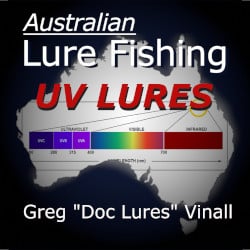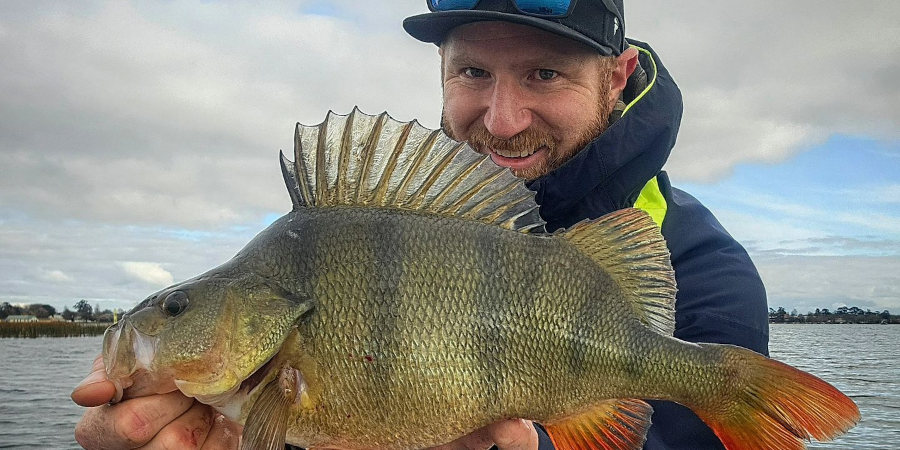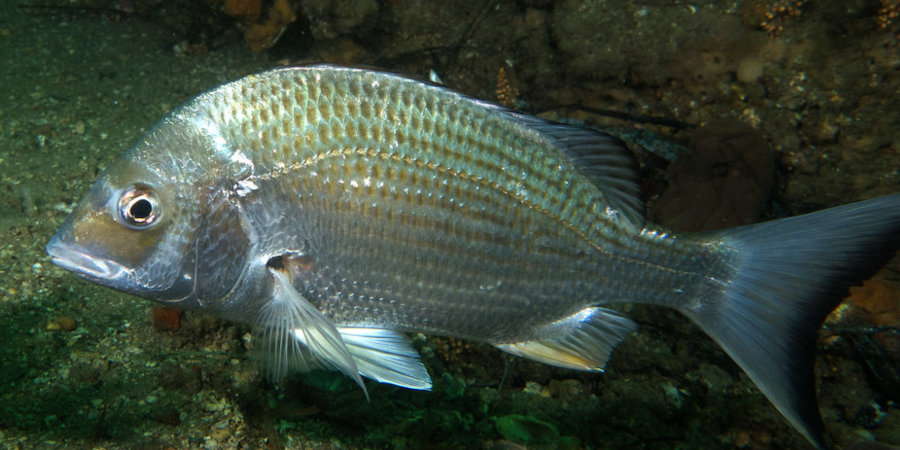

Greg’s Thoughts On UV Paints For Fishing Lures
Apologies……. the links to references mentioned in the audio are missing from these show notes. I’ll update them late afternoon on 2 December, until then enjoy the audio 😉 – Doc
.
- Many anglers view UV colours as some kind of magical, fish attracting technology. Others are skeptical about the virtues of UV pigments as fish attractors. In this episode I flesh out some of the facts about UV colours, UV light behaviour in water and the ability of the fish to see UV light.
- There is plenty of documented scientific evidence that some (but definitely not all) fish species are able to see colours in the UV spectrum. To see UV pigments on a lure, there must be enough downwelling UV light from solar radiation to reflect off the lure and reach the fish’s eyes.
- Confusing the issue is the phenomenon of UV fluorescence, which is when UV light striking a lure is not reflected, but is absorbed and then re-emitted at a lower wavelength in the visible light range. This is what happens when so called UV lures are placed under a “black light” (UVA).
- Like humans and other animals, fish don’t need UV vision to be able to see fluorescence. But fluorescence is usually very week and gets overpowered by other (visible wavelengths). Usually in aquatic environments the UVA available to create fluorescence is very limited, so these pigments are no more visible to fish than any other paint.
- The theory that UV fluorescence makes lures easier for fish to see at depth is usually based on the mistaken belief that UVA penetrates deeper in water than other wavelengths. This is repeated numerous times in the fishing literature, but the scientific literature suggests otherwise. In reality, UVA does not penetrate to anywhere near the depths that some visible wavelengths do (especially those associated with blue, green and purple colours). Paints that glow under a UVA light are therefore very unlikely to have much, if any, benefit to lure fishers, especially when fished deep.
- It is important to note that penetration of UVA is drastically reduced when the sun is not directly overhead, when there is cloud cover or haziness in the air, when there is any kind of plankton, silt, colour or particulate material in the water, when there is shade or when there is a ripple on the water surface. Low levels of UV mean low excitation of molecules and less fluorescence.
- Coral reef fish live in environments where there is the highest potential for UV penetration, yet an Australian study of 211 coral reef species found that over 50% of them had an ocular lens that (like humans) is opaque to UV. This means that UV light can’t penetrate to the retina, and hence there can be no stimulation of the optic nerve and those species are definitely unable to detect UV as a colour.
The Bottom Line: Greg’s Approach
- Whilst the possibility that UV paints could make a difference to strike rates on lures can’t be completely discarded, the science would suggest it’s highly unlikely to make a huge difference.
- Personally, as a lure maker, I’ve amassed over 300 different coloured paints over a few decades, including plenty of blends and tints I’ve developed. But I don’t own any UV paints – and I don’t plan on rushing out to buy any!
- My advice? If you love lures with UV paint and are convinced they make a difference, keep using them. Having confidence in your lures is massively important. But if you’re on the fence about UV paints (or you’re a flat-out sceptic like me), focus on the things that really matter like sound, shape, action, vibration, flash, diving depth and so on. Either way, you’ll catch fish.
Soft Plastic Lure Fishing Hacks 101 With Greg Vinall
EPISODE # Check out our archives for more information on Botany Bay Fishing Spots!Fishing with soft plastic lures can be incredibly rewarding if you know how to use them effectively. With over 25 years of experience, I've picked up a range of tips and tricks that can...

Advanced Soft Plastic Techniques With Rory Benn-Clibborn
This interview with Rory Benn-Clibborn is EPISODE 679. Check out our archives for more information on Lure Fishing In Australia!In this masterclass, I chat with Rory Benn-Clibborn from Perch Palm Lures about various advanced techniques for fishing with soft plastic...

The Art Of Luring Bream
Tim “The Bream” Morgan is highly respected for his achievements on the tournament bream circuit, so when he gets chatting to fellow bream gun Andrew Death, you’d better believe that the pro tips will start flowing!

I agree with the scientific research that UV paints are a waste of time and money considering that fishes eyes are not designed to see them but I am a strong believer in flourescent paints that can be charged by sunlight and glow at depth . I find that certain Rapala perch pattern lures with the orange belly seem to attract large brown trout at depth behind a down rigger bomb in late autumn or early winter . They are schooling in the river entrance to the lakes waiting for the rains so they can run up to spawn, I have tried other lures same shape size from Rapala with little success but they jump all over the orange belly , I believe they are hitting them out of aggression and not for food , they are thinking that they are fighting the competition for spawning rights. Just my opinion and observation.
Thanks Evan, I’ve been a fan of fluorescent colours myself, although I’m starting to question it a little more of late. Many fluorescent colours absorb UVA and emit it as longer wavelength, which is what makes them fluorescent. Of course in which case there would have to be UV downwelling present, which seems to happen less and to a lower intensity than most people think. I might need to do a little more work in that area, I think!
Interestingly, studies in the US have shown that some trout and salmon in lakes have relatively poor ability to see reds and oranges most of the year, but there is a physical change in the structure of their retina around breeding season that makes them suddenly very receptive to these wavelengths. So you may well be on the right track with your thinking about spawning competition. Also, it’s not uncommon for trout and salmon to eat dislodged eggs at those times, which are bright orange in colour, of course.
Thanks for the comment.
Greg
Pardon my ignorance, is UV paint similar to those glow in the dark paint we have on metal jigs ?
I know some UV painted lures that glows brightly when shown with a UV torch but fades out immediately without the UV torch.
Glow in the dark paint on the other hand continues to emit light after the UV torch is switched off, albeit for a limited time only.
Yeah, there is a bit of overlap between fluorescent, UV fluorescent, UV reflecting and luminescent. I’ll try to explain…… hopefully without making it more confusing.
Fluorescent pigments absorb UV and emit it as longer wavelength light that make the colours look more intense. For example, green fluorescent paints has green pigment that reflects the green wavelengths. But it also has a UV that absorbs UVA and emits it as green light, making the paint look brighter or more intensely green. They only work when there is UV present, so the effect is much stronger above water than below. And this is the only form of UV paint that’s effective in bright light.
What most anglers and lure makers refer to as UV paint is the kind that emits a glow in the visible spectrum only when it’s illuminated with UVA (eg from a blacklight). It doesn’t glow once the UV source is removed and doesn’t glow strongly enough in daylight to make much of an impact. You have to expose them to UVA in a dimly lit or dark room to see them well. The problem with these is that by the time the lure is deep enough for the water to be dark there’s no longer any UVA to make the lure glow.
True UV pigments are the ones that simply reflect UV light as UV light. Humans can’t see these and neither can those fish species that have lenses opaque to UV – but some fish that have the ability to see UV wavelengths can see these – provided there is UV penetration into the water. They don’t emit a glow under a blacklight and I don’t know of any lure makers that use these. We’d have no way of telling even if they. There are definitely fish species that have these pigments in their skin though – and when scientists say a species of fish has UV vision, this is what they are referring to them being able to see. Most anglers incorrectly assume that scientists are referring to UV fluorescent paints.
Lastly there are the glow in the dark, luminescent (also called “phosphorescent”) colours, which are the ones you refer to that glow for some time after being exposed to light. Under most circumstances these are probably the most visible to fish as they are basically “charged up” and then emit light in a wavelength that’s visible to many fish species regardless of how deep they are in the water or whether there is any UV present at all.
Hope this makes sense!
Hey greg , i absolutely love when you get into the scientific side of fishing , also helps me amass a ton of knowledge and opens my mind up to concepts i never realised could be applied to fishing .
Could you possibly do a pod regarding the factors which cause fish to feed ? .
Much love,
Russell
Hi Russell, Thanks so much for your kind words mate! And thanks for your suggestion for my next solo rant….. I’ll give that some thought, there’s probably some useful things I could contribute there.
Regards
Greg
Hi Greg,
Firstly.. great podcast. I was a bit late finding the stream but I’m steadily working my way through them and have found I have learnt something from every single one of them.
One question.. in this podcast you noted that some fluorescent pigments absorb UV light and emit it as a longer wavelength that potentially fish can see (but there is little UV down at the depths we fish so is probably of little use) but I was wondering if you knew of any pigments that would absorb the light available (blue wavelengths) and emit it at a different wavelength that might stand out down there (ie green or red when the natural light that wave length doesn’t penetrate that deep)
Hope that made sense 🙂
Tony
Great question Tony.
The short newer is that there re none that I’m aware of.
Short wavelength electromagnetic waves (ie UV) are very high energy, which is why they damage our skin etc. Fluorescence occurs when particular pigments get energised by the radiation and that energy is emitted as a lower wavelength light (eg blue, green, red or orange). The extra light emitted makes those hues look extra bright.
Once we get into the visible spectrum the wavelengths are longer and less energetic, so they’re less able to energise the surface they irradiate. However, those laundry detergents that make fabric look whiter are apparently loaded up with a pigment that absorbs blue light and re-emits it as white. So in theory it would be possible…….. I just don’t know of anyone who’s doing it.
Thanks Greg, makes sense..
Now we just need all those scientists working to cure cancer etc to focus on something really important like lure pigments 🙂
Tony
If only they would Tony!
Noticed the podcast focus on using UV at depth. For over 35 years we’ve flyfished for trout, planning for total black nights, with luminous doll flies in Australia and NZ, with amazing success from the shore. Any other fly simply doesn’t work. If there is any moon light, then a traditional or hybrid fly is required. Note the fly sits a metre or two down at most.